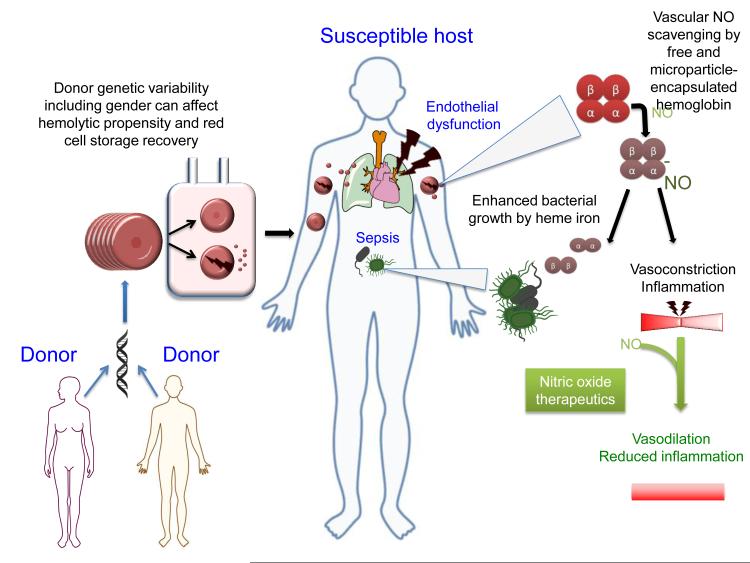Figure 1.
Donor genetic variation including gender can affect hemolytic propensity and red cell storage recovery. The red cell storage lesion can involve modifications in membrane structure leading to the release of microparticles and hemolysis. Massive transfusions of red cell units or transfusion into patients suffering endothelial dysfunction, infection, and other pathological situations (susceptible hosts) can exacerbate inflammation, vasoconstriction and hypertension leading to multiple organ dysfunction syndrome (MODS). Additionally, hemolysis can exacerbate sepsis by the release of iron from denatured hemoglobins. Nitric oxide therapeutics can potentially mitigate transfusion-related injuries in patients suffering endothelial dysfunction by improving NO bioavailability required for vasodilation and proper endothelial function.

